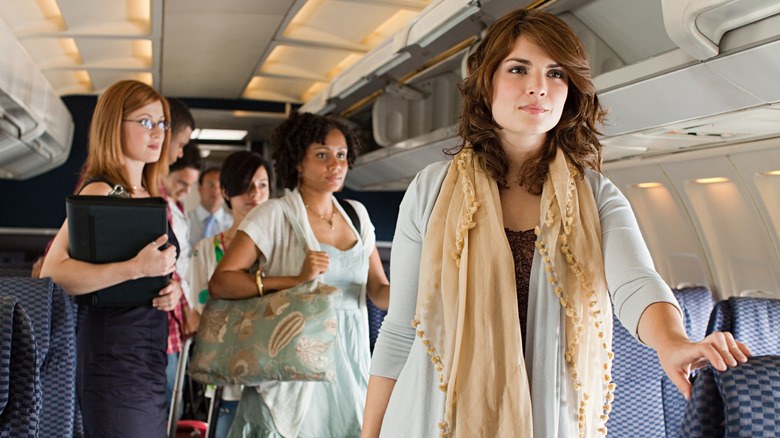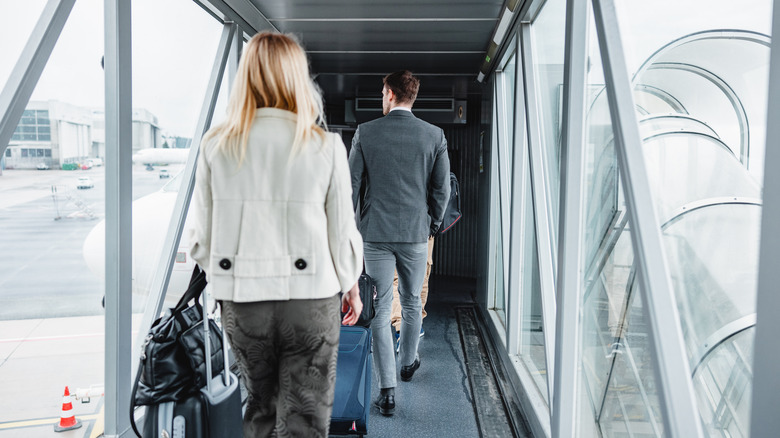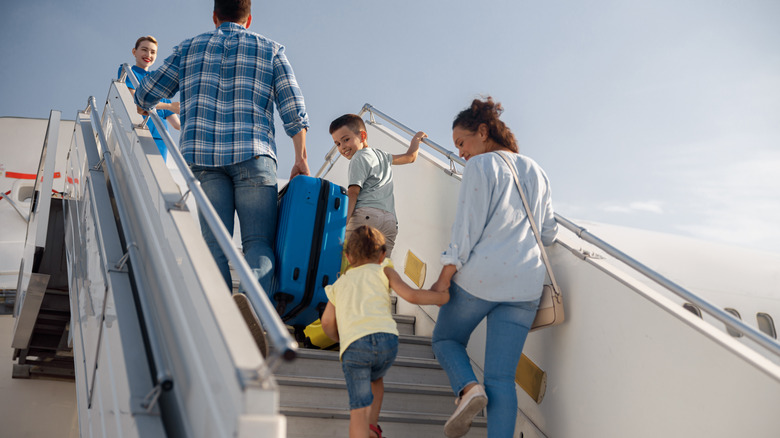The Real Reason Planes Board Front To Back, According To Science
Flying can be a stressful enough experience without the added stress of waiting ages to board. If you have been on several planes, you've probably noticed you and the other passengers usually board from the front to the back. Though it may feel like it, this method of boarding is not to test your patience as people slowly begin to move down the aisle. There are actually a couple of reasons for boarding front-to-back: efficiency, and balancing out the plane, per Aero Corner.
Nobody likes standing around for ages watching people step over others, fumble with their bags, and generally trying to find their seat. However, Aero Corner reports that according to "modeling" experiments, overall, going front-to-back is more efficient than going back-to-front. Additionally, as pointed out by Distractify, boarding front-to-back allows first and business-class passengers to experience that little extra bit of luxury they expect when paying more to fly. There will never be a completely fuss-free way of boarding, but this method has been found to work relatively well.
Balance is vital when boarding a large vehicle like a plane
Per Aero Corner, planes boarding front-to-back allow for better balance. As engines sit at the back of the airplane, it's important that the front is evened out weight-wise before passengers start to move to the back. Planes are an incredible invention, but they still need to be used correctly in order to fly smoothly, hence the balancing act.
If you're a nervous flyer, you don't need to worry too much about balance. A plane tipping slightly one way or the other won't cause major issues. It's mainly annoying for cabin crew when they are trying to get everything arranged. Plus, it's difficult to align the jetway up to the door so passengers can board when the plane balance is off-kilter. Luggage also needs to be taken into consideration. If passengers start from the front and put their luggage in an overhead space, the plane won't be as unbalanced compared to if passengers did the same but started from the back.
Boarding back-to-front was found to be inefficient and time-consuming
However, balancing out the plane isn't the only reason passengers board front-to-back instead of the other way around. In an episode of "Mythbusters," the team found that boarding back-to-front was the slowest method of getting everybody on the plane. From the time boarding was announced to when the last passenger was seated, the process took 24 minutes and 29 seconds. Moreover, several people couldn't fit their hand luggage in the overhead lockers. In comparison, the method of boarding those who had window seats, then middle seats, and finally aisle seats, took approximately 15 minutes — almost half the time.
Finally, due to the majority of planes now having first and business class sections, boarding front-to-back makes more sense as these sections can be filled first. This then frees up the aisle so the rest of the passengers can pass through smoothly. The exception to this is if families or large groups board together, in which case the aisle is more congested anyway because they're often all sitting in the same row.


